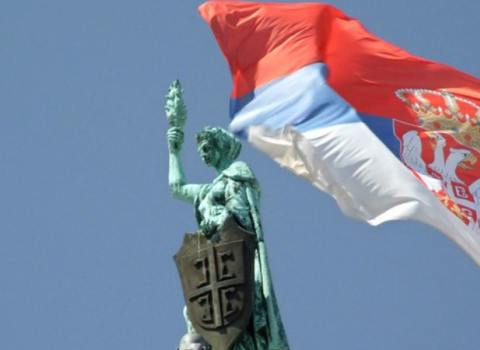We take a look at the impact of the researcher mobility scheme as it reaches its 20th birthday

Photo credits: Ai.Comput'In / Flickr
Twenty years ago, the European Commission launched the Euraxess portal to help support researcher mobility and promote cross-border knowledge exchange. Two decades later, it has become the one-stop-shop for navigating careers across Europe, but the benefits of having an internationally mobile researcher workforce are not equally spread across the EU.
At its launch as the European Researchers Mobility Portal, just seven countries used the portal. It has grown massively since then, with 43 EU and other countries now participating, and more than 110,000 researchers using Euraxess to find international job and funding opportunities, manage visa and pension systems and network with institutions abroad and back home.
To mark the 20th anniversary, in June the Commission announced Euraxess would be getting a revamp to make it easier for researchers and employers to find information on the platform. This included the launch of the ERA Talent Platform, which brings together Euraxess, the Resaver pension scheme and the Research and Innovation Careers Observatory together in one location.
“We are focusing on tackling brain drain and achieving balanced mobility,” a European Commission spokesperson told Science|Business. “Users are often using Euraxess to connect back with what’s happening in their home country, and it provides resources for researchers to return to their home countries after they have gained international experience.”
The mobility challenge
Enabling researchers to work across Europe is a key strategy objective for the EU, supporting cross-border knowledge sharing and collaboration and fostering scientific innovation.
But while Euraxess may be a channel for promoting a particular country as a hub for research, it also advertises opportunities that may lure researchers abroad. The Widening countries in central and eastern Europe have historically seen more scientists leave for posts abroad than are attracted from elsewhere, exacerbating brain drain.
It is up to individual countries to figure out how the platform can address their specific challenges around mobility, the Commission’s spokesperson said.
“Like any other eastern European country, more researchers are leaving [Hungary] than coming to the country,” says Adam Molnar, head of area at the Knowledge Management Centre of Bay Zoltán Nonprofit Ltd, which leads Euraxess coordination activities in Hungary.
It’s a balancing act, with Molnar’s team ensuring researchers can easily find opportunities across the Euraxess network, “while also being aware of the fact we don’t want to advertise [opportunities outside Hungary] too loudly”.
If the correct balance is struck, Euraxess can be a useful tool for boosting brain circulation. It makes it easier to stay in touch with researchers who have gone abroad, while also providing a centralised channel for Hungary to promote its own opportunities. Most effort is spent getting institutions to participate in the platform, which is voluntary in Hungary.
“As a coordinator, I see our role as extending networking within institutions, rather than individual researchers,” says Molnar. “We’re trying to cover the mobility and career development topic as much as possible by engaging specific players to share information and keep us up to date. We’re also putting a lot of effort into making the Euraxess job and funding databases well known.”
Hungary joined Euraxess in 2008, and today there are 14 member institutions, which include universities, the Association of Hungarian Women in Science, a non-governmental organisation, and the Tempus Public Foundation, a funding agency.
Other countries have mandated Euraxess participation in a bid to increase the number of researchers coming into the country. Croatia, for example, introduced a new strategy for boosting researcher mobility in April, specifying Euraxess as the tool to do this. Meanwhile in Poland, a law introduced in 2011 makes it a legal requirement for higher education institutions to publish job adverts on Euraxess.
“It makes our institutions more international than before,” says Bogna Hryniszyn, director of excellence at the Polish Academy of Sciences science department. “You cannot have research without transnational cooperation. Mobile researchers bring fresh air to institutions, and when we have researchers who go abroad then come back, they bring not only a new cultural aspect but their contacts, too.”
Hryniszyn says Euraxess is an essential tool for promoting Poland as a destination for research careers. “The challenge of closing the research gap would not be possible without Euraxess because it has the biggest database of [international] job opportunities.”
Measuring impact
Quantifying the impact Euraxess is having when it comes to closing Europe’s east-west knowledge gap is tricky. The coordinators Science|Business spoke to do not have access to data showing researcher mobility flows that can be attributed to the portal, although they all spoke positively about its impact.
Other policies at a national and EU level, as well as wider events, are influencing the ebb and flow of researchers into different countries. For example, in 2018 Widening Fellowships (since rebranded as European Research Area Fellowships) were introduced to boost Horizon funding in the 13 Widening countries, while the rising cost of living in western Europe is likely to have pushed some researchers to consider opportunities in destinations with lower living costs. The globalisation of the Euraxess network, which now includes countries in the Caribbean, Americas and Asia, also means there are more researchers looking for jobs in Europe in general.
“In the past, we didn’t have a lot of international interest and now we do,” says Ozren Polašek, director of the Croatian Science Foundation. This change has become particularly pronounced since the COVID-19 pandemic. “Things have changed a lot, and we have become a lot more interesting to foreigners. We are actively involved in mobility, and without Euraxess we couldn’t have that integration.”
But Euraxess clearly isn’t a salve for all researcher mobility challenges. Molnar says a lack of government funding for mobility projects makes it difficult to dedicate time to building out Hungary’s Euraxess network, while not speaking the local language can discourage researchers from considering a move.
Polašek says Croatia’s relatively low gross national product, which was $20,673 per capita in 2023 compared to the EU’s $35,005 average, can also be a deterrent. “It’s impossible to employ a foreigner on [their expected] salary. That’s the main limiting factor,” he said.





 A unique international forum for public research organisations and companies to connect their external engagement with strategic interests around their R&D system.
A unique international forum for public research organisations and companies to connect their external engagement with strategic interests around their R&D system.